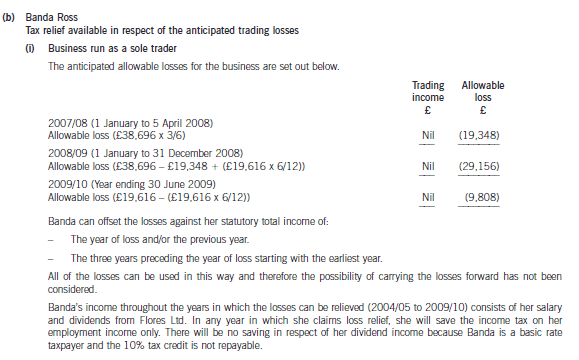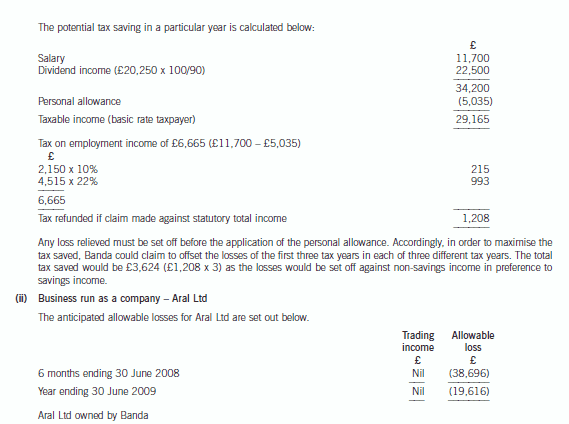北京市考生注意:在ACCA考试中提前交卷后果怎么样?不堪设想……
发布时间:2020-01-09
近期,有不少第一次备考ACCA考试的小伙伴来咨询51题库考试学习网,问:考试能不能提前交卷呢?在这里告诉大家,根据考试的相关规定是不允许的。什么?还有些小伙伴不知道考试时应当注意些什么?没关系,现在了解还来得及,51题库考试学习网这就将相关注意事项告诉大家:
ACCA考试之前注意事项:
1.考生必须准时到场考试,一旦迟到,考试时间不会延长。因此,再次强调考生必须时刻关注考试时间,以防迟到。
2.三小时答题时间及15分钟的读题时间以准考证时间为准。阅读过程中,考生可以浏览试题册,但是不能打开并书写答题册。如果违法相关规定,有可能会取消考试资格
3.需要注意的还有,考试开始一小时后,考生不允许再进入考场。
4.直到考试结束,考生才允许离开考场。
5.如果考生要求短时间离开考场,必须有监考人员陪同。
6.不得私自携带手机等电子工具,考生必须将书包和公文包放置监考人员规定处。
7.对于笔考的科目,考生只能用黑色圆珠笔作答。
8.考生必须确认自己参加的考试的代号与准考证上的考试科目代号一致。
ACCA考试时的注意事项有哪些?
1.在新版的考生答题册上(candidate answer booklet)的第一页仔细填涂以下项目
1)考试的科目和版本(注:如P2,应填INT;F4填写ENG;F6填写UK等)
2)考场代码(包括Hall code)考场名字和座位号
3)以上信息均在你个人的准考证(Exam Attendance Docket)上有显示;
2.在新的一页上开始每答一道新题,要在这页上部填涂题号;
3.所有答题均使用黑色圆珠笔作答,(铅笔,黑色签字笔,荧光笔等不允许);
4.答错可划掉错误的答案,不允许使用涂改液;51题库考试学习网建议考生在不确定答案的时候最好不要填写,卷面也是影响得分的一大因素
5.不能将答案写在答题纸边缘及答题本两页的中间位置,否则将视为无效作答;
学生如需要,可索要第二本答题本,第二本答题本上同样必须填写完整个人信息。
当然,对于笔考,机考的确是有些差别的。这主要体现在:
1、大题部分需要通过计算机进行解答,相较于笔试,计算机打字能力和某些公式的熟练度会间接地影响考试结果;
2、考试时间有所不同。目前,应用技能课程的机考时间均为3个小时,而战略课程的笔试一般为3小时15分钟,SBL为4个小时。因此,考试在考试之前需要提前了解是机考还是笔考,以免出现战略层面上的失误。
以上ACCA考试的注意事项大家要提高警觉哦,遇到了上文提到以外突发事故及时向监考老师提出来,听从监考老师的安排即可,不要因为突发事件而影响了自己的考试心态从而影响到成绩。调整好心态,重新积极考试!~
下面小编为大家准备了 ACCA考试 的相关考题,供大家学习参考。
(b) The tax relief available in respect of the anticipated trading losses, together with supporting calculations and
a recommended structure for the business. (16 marks)


Aral Ltd owned by Banda
The losses would have to be carried forward and deducted from the trading profits of the year ending 30 June 2010.
Aral Ltd cannot offset the loss in the current period or carry it back as it has no other income or gains.
Aral Ltd owned by Flores Ltd
The two companies will form. a group relief group if Flores Ltd owns at least 75% of the ordinary share capital of Aral
Ltd. The trading losses could be surrendered to Flores Ltd in the year ending 30 June 2008 and the year ending
30 June 2009. The total tax saved would be £11,079 ((£38,696 + £19,616) x 19%)
Recommended structure
The Aral business should be established in a company owned by Flores Ltd.
This will maximise the relief available in respect of the trading losses and enable relief to be obtained in the period in
which the losses are incurred.
Tutorial note
The whole of the loss for the period ending 30 June 2008 can be surrendered to Flores Ltd as it is less than that
company’s profit for the corresponding period, i.e. £60,000 (£120,000 x 6/12).
(b) What are the advantages and disadvantages of using a balanced scorecard to better assess the overall
performance of Lawson Engineering? (8 marks)
(b) In many ways Lawson Engineering and its performance explains why Kaplan and Norton developed the balanced scorecard
to overcome the reliance on traditional, and they would argue flawed, financial measures of performance such as return on
capital employed (ROCE). Lawson Engineering as a privately owned company does not have the same pressure to maximise
shareholder wealth, which is the overarching long-term goal of publicly quoted companies. The intangible resources discussed
above – both internal and external – reflect the success of the company in meeting the expectations of the other key
stakeholders in the business, namely customers, employees and suppliers. In terms of the other measures of performance
used in the balanced scorecard the customer perspective seems to be very much a positive area of performance. Lawson
Engineering has developed a clear niche strategy based on the excellence of its products. Market share as a measure of
customer satisfaction is not too relevant as the company has chosen to develop its own markets and is not looking for large
volumes and a dominant market share. The growth of the company suggests that it is both retaining its existing customer
base and acquiring new ones. Clearly there need to be measures in place to show where its growth is coming from. Customer
acquisition is usually an expensive but necessary activity and cutomer retention a more positive route to profitability. Today
there is increasing emphasis on customer relationship management (CRM) and measures to show the share of a particular
customer’s business the company has, rather than the overall market share the company has achieved. Michael Porter has
drawn attention to the fact that having the biggest market share is not necessarily associated with being the most profitable
company in that market. Customer acquisition and retention are both useful indicators of customer satisfaction which many
companies have problems in measuring. Finally, knowing which customers are profitable ones is a key requirement.
Surprisingly there is a lot of evidence to suggest that many companies are unsure which of their products and which
customers actually contribute to their profits.
The third measure in the balanced scorecard is an internal one – the effectiveness or otherwise of the firm’s internal processes.
In turn there are three areas where performance should be measured – innovation, operational processes and after sales
service (where appropriate). Innovation itself is a result of effective internal processes and Lawson Engineering through its
patents and awards has tangible evidence of its success. Many firms are measuring the contribution of products introduced
in the last three or four years – 3M, a global manufacturer of consumer and industrial products looks to achieve 30% of its
sales from products that are less than four years old. Equally important in a company such as Lawson Engineering is the time
taken to develop and get new products to their customers. The strategy of being ‘first to market’ can be a very effective
competitive strategy.
Equally important for the customers are the operational processes that produce and deliver the inputs from their suppliers.
The introduction of JIT and the use of technology to shorten and simplify the links between supplier and customer are ways
of shortening lead times and increasing customer satisfaction. Lawson Engineering has looked to innovate its processes as
well as its products and can look to develop measures of key areas of operational performance. Finally it is worth stressing
that financial performance, customer satisfaction and effective internal processes are all dependent on the people who make
things happen in the firm. Employees and the way they learn and grow in their jobs will determine whether or not the firm
succeeds. Again there is evidence to suggest that Lawson Engineering’s employees are being trained and developed and as
a consequence are well motivated.
The balanced scorecard has been criticised on a number of accounts. Firstly, such a comprehensive set of performance
measures will take considerable time and commitment on the part of senior management to develop. There is a need to avoid
over-complexity and assess the costs and benefits of the process. Secondly, there is the question of whether all the key
stakeholders have shared goals and expectations and whether the measures are focused on short-, medium- or long-term
performance. Thirdly, its focus on internal and external processes may not come easily to firms that have organised themselves
on traditional lines. Most organisations have retained departments within which functional specialists are located, e.g.
production, marketing etc. Changing the way performance is measured may need a radical change in culture and meetsignificant resistance.
You are an audit manager responsible for providing hot reviews on selected audit clients within your firm of Chartered
Certified Accountants. You are currently reviewing the audit working papers for Pulp Co, a long standing audit client,
for the year ended 31 January 2008. The draft statement of financial position (balance sheet) of Pulp Co shows total
assets of $12 million (2007 – $11·5 million).The audit senior has made the following comment in a summary of
issues for your review:
‘Pulp Co’s statement of financial position (balance sheet) shows a receivable classified as a current asset with a value
of $25,000. The only audit evidence we have requested and obtained is a management representation stating the
following:
(1) that the amount is owed to Pulp Co from Jarvis Co,
(2) that Jarvis Co is controlled by Pulp Co’s chairman, Peter Sheffield, and
(3) that the balance is likely to be received six months after Pulp Co’s year end.
The receivable was also outstanding at the last year end when an identical management representation was provided,
and our working papers noted that because the balance was immaterial no further work was considered necessary.
No disclosure has been made in the financial statements regarding the balance. Jarvis Co is not audited by our firm
and we have verified that Pulp Co does not own any shares in Jarvis Co.’
Required:
(b) In relation to the receivable recognised on the statement of financial position (balance sheet) of Pulp Co as
at 31 January 2008:
(i) Comment on the matters you should consider. (5 marks)
(b) (i) Matters to consider
Materiality
The receivable represents only 0·2% (25,000/12 million x 100) of total assets so is immaterial in monetary terms.
However, the details of the transaction could make it material by nature.
The amount is outstanding from a company under the control of Pulp Co’s chairman. Readers of the financial statements
would be interested to know the details of this transaction, which currently is not disclosed. Elements of the transaction
could be subject to bias, specifically the repayment terms, which appear to be beyond normal commercial credit terms.
Paul Sheffield may have used his influence over the two companies to ‘engineer’ the transaction. Disclosure is necessary
due to the nature of the transaction, the monetary value is irrelevant.
A further matter to consider is whether this is a one-off transaction, or indicative of further transactions between the two
companies.
Relevant accounting standard
The definitions in IAS 24 must be carefully considered to establish whether this actually constitutes a related party
transaction. The standard specifically states that two entities are not necessarily related parties just because they have
a director or other member of key management in common. The audit senior states that Jarvis Co is controlled by Peter
Sheffield, who is also the chairman of Pulp Co. It seems that Peter Sheffield is in a position of control/significant influence
over the two companies (though this would have to be clarified through further audit procedures), and thus the two
companies are likely to be perceived as related.
IAS 24 requires full disclosure of the following in respect of related party transactions:
– the nature of the related party relationship,
– the amount of the transaction,
– the amount of any balances outstanding including terms and conditions, details of security offered, and the nature
of consideration to be provided in settlement,
– any allowances for receivables and associated expense.
There is currently a breach of IAS 24 as no disclosure has been made in the notes to the financial statements. If not
amended, the audit opinion on the financial statements should be qualified with an ‘except for’ disagreement. In
addition, if practicable, the auditor’s report should include the information that would have been included in the financial
statements had the requirements of IAS 24 been adhered to.
Valuation and classification of the receivable
A receivable should only be recognised if it will give rise to future economic benefit, i.e. a future cash inflow. It appears
that the receivable is long outstanding – if the amount is unlikely to be recovered then it should be written off as a bad
debt and the associated expense recognised. It is possible that assets and profits are overstated.
Although a representation has been received indicating that the amount will be paid to Pulp Co, the auditor should be
sceptical of this claim given that the same representation was given last year, and the amount was not subsequently
recovered. The $25,000 could be recoverable in the long term, in which case the receivable should be reclassified as
a non-current asset. The amount advanced to Jarvis Co could effectively be an investment rather than a short term
receivable. Correct classification on the statement of financial position (balance sheet) is crucial for the financial
statements to properly show the liquidity position of the company at the year end.
Tutorial note: Digressions into management imposing a limitation in scope by withholding evidence are irrelevant in this
case, as the scenario states that the only evidence that the auditors have asked for is a management representation.
There is no indication in the scenario that the auditors have asked for, and been refused any evidence.
声明:本文内容由互联网用户自发贡献自行上传,本网站不拥有所有权,未作人工编辑处理,也不承担相关法律责任。如果您发现有涉嫌版权的内容,欢迎发送邮件至:contact@51tk.com 进行举报,并提供相关证据,工作人员会在5个工作日内联系你,一经查实,本站将立刻删除涉嫌侵权内容。
- 2020-01-09
- 2020-04-29
- 2019-07-19
- 2020-01-01
- 2020-01-09
- 2020-04-22
- 2020-01-09
- 2020-03-21
- 2020-04-14
- 2019-12-28
- 2020-01-09
- 2020-04-10
- 2020-05-14
- 2020-01-09
- 2020-04-20
- 2019-07-19
- 2020-03-22
- 2020-01-09
- 2020-01-09
- 2020-04-10
- 2020-01-09
- 2020-03-07
- 2020-05-11
- 2020-03-25
- 2020-03-05
- 2020-05-14
- 2020-01-08
- 2020-02-01
- 2019-07-19
- 2019-12-28